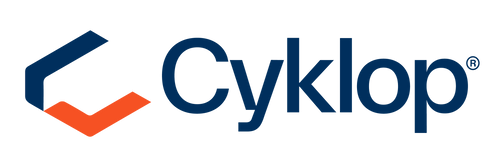Inkjet Direct Part Marking System for Metal & Plastic
Direct part marking is an essential process for many of today’s top manufacturing operations. Especially useful in the fields of automotive production and aerospace engineering, direct part marking allows companies to develop full supply chain traceability through the use of machine-readable barcodes and data matrices.
Depending on the specific standards, companies may need to mark their parts with:
- Barcodes
- 2D data matrices
- Lot codes
- Serial numbers
- Manufacturer titles
- Model designations
- Type certificate numbers
-
Production certificate numbers
Finding the right direct part marking system for metal and plastic is critical to maintaining standards and compliance in demanding manufacturing environments. Here’s what a direct part marking system from InkJet, Inc. can do for you.
Direct Part Marking Systems for Metal & Plastic
For direct part marking to work, each code must be highly legible. Without consistent code readability, supply chain issues may arise, leading to possible company fines, recalls, and reputation damages. To avoid these problems, manufacturers must use reliable marking machines that meet the high-speed needs of modern production lines. That’s where inkjet printers come in.
First introduced to the part marking market in the 1970s, inkjet printers are now essential tools for industrial coding. For metal and plastic applications, in particular, both continuous inkjet (CIJ) printers and thermal inkjet (TIJ) printers are the go-to hardware options. Dependable and capable of producing high-quality markings, these machines are well-suited for direct metal and plastic marking, but they differ slightly in mechanical qualities.
This table lists our recommended direct part marking solutions and their general specifications. Additional information for each system can be found just below the table. Click the linked title in the table’s leftmost column to jump to a specific solution.
Continuous Inkjet Printers: DuraCode Touchscreen, Keyboard, and Pigment
Continuous inkjet (CIJ) printers are non-contact production line printing systems that mark substrates moving at 300 m/min and above. Built with powerful ink circulation systems, CIJ printers can operate 24 hours a day easily without downtime. The speed, wide ink compatibility, and versatile printheads of CIJ printers enable users to mark thousands of products daily with long-lasting, highly legible code.
|
All DuraCode systems can mark porous and non-porous substrates at speeds up to 320 m/min. Equipped with an IP55 outer structure and able to operate in temperatures ranging from 41-113°F, the DuraCode CIJ can withstand potentially hazardous environmental elements to deliver consistently excellent results. The DuraCode Keyboard and Touchscreen offer the same specifications and compatibility with ink formulas. The only difference between them is their input medium. The DuraCode Pigment has the same specifications as the DuraCode Keyboard and Touchscreen but uses pigmented ink instead of dye ink. |
|
|
See the chart below for a closer look at the DuraCode models’ most important specifications.
|
|
|
|
|
|
|
|
|
|
|
|
|
|
|
|
|
|
|
|
|
|
|
|
|
|
|
|
|
|
|
|
|
|
|
|
|
|
|
Thermal Inkjet Printers: Anser U2, X1, and A1 Models
Thermal inkjet (TIJ) printers are smaller, lighter, and more cost-effective than CIJ systems. While CIJ systems typically weigh around 100 lbs and can cost well over $10,000, most TIJ models weigh 5-10 lbs and cost as low as $1,499.00.
Although thermal inkjet systems are compact and lightweight, they offer impressive coding specifications. For example, the Anser U2 Smart can create 400 x 300 DPI codes up to 0.5” tall (1” tall with the Anser U2 SmartOne). Higher-end TIJs like the Anser X1 can create 600 x 600 DPI codes up to 2” tall with stitched printheads.
TIJ printers are often designed for slower speed lines and intermittent coding tasks, but some TIJ models offer high-speed capabilities as well. InkJet, Inc. carries numerous TIJ printers of varying specialties and price points. Our current options include:
See the chart below for a closer look into how our TIJ options compare to one another:
Ink Options for Direct Part Marking on Metal & Plastic
Another reason inkjet printers make excellent direct part marking systems is that they are compatible with a diverse portfolio of ink formulas. All substrates have different material qualities that impact whether an ink formula can successfully adhere to the surface. Given how many different metals and plastics exist on the market today, it’s essential to have a firm understanding of which formulas will work best for a particular substrate.
To help companies avoid potential marking failures, InkJet, Inc. offers a range of formula options that work with a variety of materials.
For metal applications, we carry formulas that are compatible with:
- Aluminum
- Steel
- Copper
- Tin
-
Iron
For plastic applications, our formulas are compatible with:
- High-Density Polyethylene (HDPE)
- Polypropylene (PP)
- High-Impact Polystyrene (HIPS)
- Polyvinyl Chloride (PVC)
-
Various flexible plastics
We carry a variety of formulas that meet industry-specific specifications, such as thermal inks approved by Boeing. We also offer custom ink services if our stock options and specialty formulas can’t match every client’s needs.
Need an Inkjet Direct Part Marking System for Metal & Plastic? InkJet, Inc. Can Help
For over 30 years, InkJet, Inc. has helped industrial operations find the equipment they need to optimize production—and we can help you, too. Our inkjet direct part marking systems utilize the latest technology and ink formulas to ensure your products are code-compliant and completely traceable. Whether you need a powerhouse CIJ or a highly mobile TIJ, our hardware offerings will help you achieve your part-marking goals.
For more information on inkjet direct part marking systems for metal & plastic, contact InkJet, Inc. online or by phone at 1(800) 280-3245.





.jpg)
